
Cameras and tripods go together like Mac & Cheese. It’s not just professionals who need a tripod – every photographer will benefit from using one at some point.
Why photographers need a tripod is what I’ll demonstrate throughout this guide. I’ll give you a clear breakdown of when you’ll need one, and which is best for different situations. If you are looking to buy a tripod for the first time then read this full guide to help you understand which one is best for you.
There are a number of situations a tripod will come in useful. When it’s windy and you’re outdoor shooting landscapes a tripod will help stabilise the tripod to avoid any shaky movement while you take the shot.
If you are taking photos at awkward angles and you’re finding it hard to keep your balance with the camera then a tripod will fix the position to allow you to adjust to a more comfortable position but keeping the camera in the right spot.
Many photographers love the effect of long exposures, or just using a slightly slower shutter speed, and using a tripod to avoid blurring the whole shot is necessary. Taking photos handheld at shutter speeds slower than 1/30th runs the risk of the photo looking blurred as your hands never stay still during the exposure (no matter how steady you think you are).
It’s best to use a tripod to keep the camera still during a long exposure so only the moving parts in the scene look blurred and nothing else.
One last situation why photographers need a tripod could be when you’re setting up an elaborate shot with lots of lights. Simply set the camera on a tripod to get the composition right and then move your lights for your subject. This means you don’t have to carry the camera with you, and your composition won’t change while you adjust the lighting.
Now you know the situations you may find a tripod important let’s have a look at what types of tripods exist for photographers.
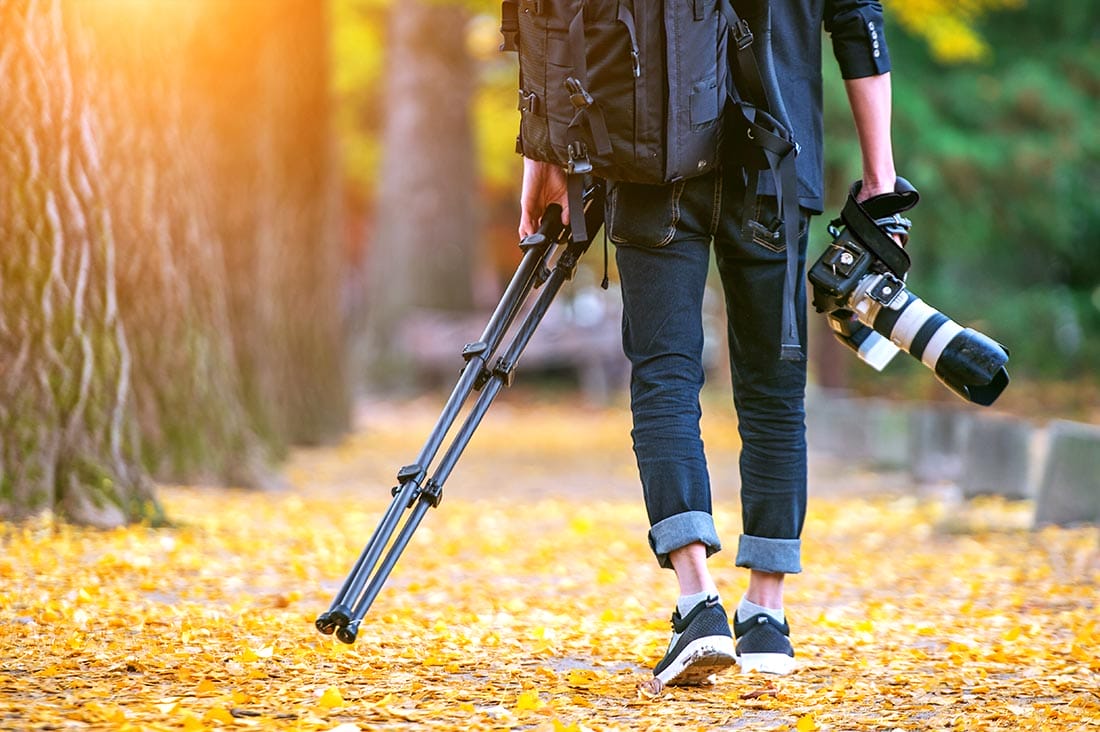
When it comes to buying a tripod for your photography it’s important to know the pros and cons of different products. It depends on your style and area of photography as to which will be best.
Cost, weight, height and other factors will all determine your choice.
If you are tall, make sure your tripod extends high enough that you won’t need to spend all your time crouching down. Tripods can extend to nearly 6ft so getting one that reaches your eye level is useful for comfort.
If you like to shoot landscapes and tend to go on long walks to reach your location you’ll want it to be compact and lightweight. But, if you work in a studio for example or shoot a lot indoors, portability may not be as important so you could get away with a heavier tripod if needed.
When it comes to choosing the right weight of tripod you need to know how heavy your camera is. The load factor as it’s called is the max weight you can place on top. We suggest a tripod that can hold at least 1.5x the weight of your heaviest camera (if you have a few).
The legs of a tripod will either have a clasped lock or a twisting mechanism. While there isn’t much of a difference, the only time I’ve seen an issue is when the rubber rings inside the twisting mechanism get worn down over years and don’t stay in place.
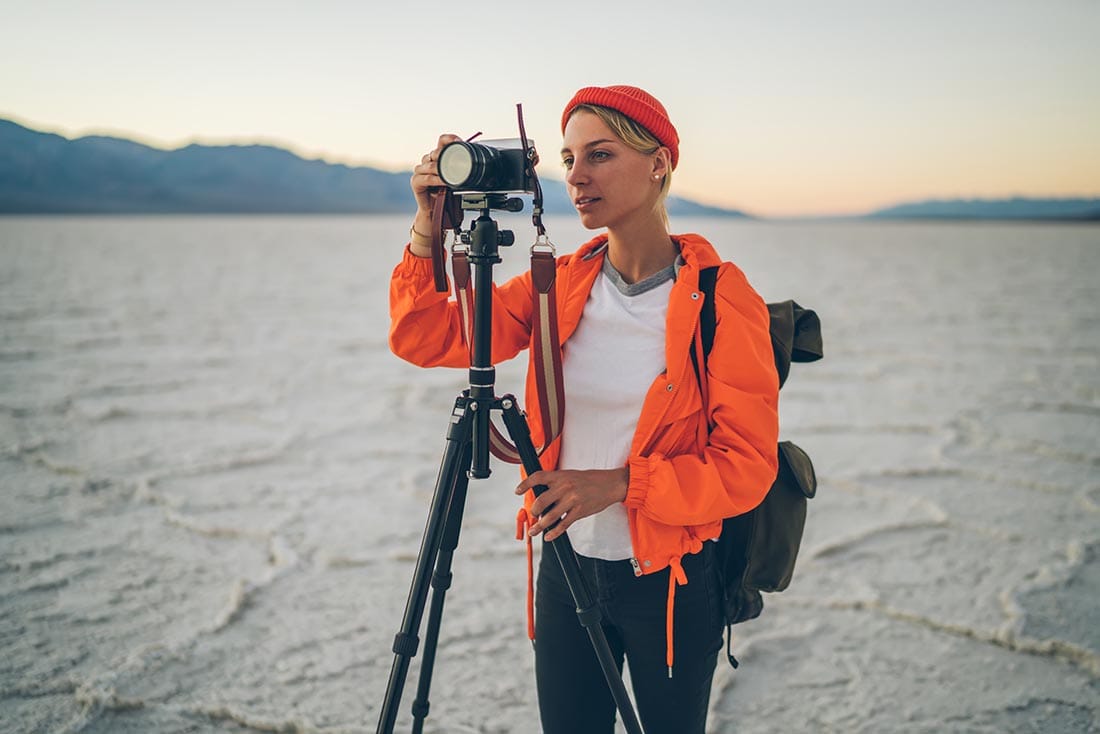
The two most popular types of tripod heads are ball head and pan/tilt head. Ball heads are the quickest and easiest type of head to use for photographers, but they are usually more expensive than the latter.
The ball joint works the same as the ball joints in our shoulders and knees – it gives the camera flexibility to move at different axis’ which helps capture shots at unconventional angles.
Through a series of locks you can tilt the head to any position and fix it in place. This is great for photographers who don’t always shoot straight-on and at eye level.

Pan/tilt handle tripods are used a lot for filming video because of the fluid movements, but you can still use them for photography too. It’s a more affordable option and offers extra precision and adjustability. The downside is that it isn’t as quick to set up as the ball headed tripods.
The benefit to pan handle tripods is that you can quickly change the view point of the camera using the handle from left to right, idea for sports photographers shooting repetitive motion for example.
But if you need a greater degree of flexibility then we’d recommend a ball headed type tripod for beginner photographers.

Tripod quick release plates are the platform that secure a camera body onto a tripod head. The screw in to the bottom of the camera and then the plate is fixed to the tripod head. There are 3 popular types of release plates; a quick release plate, an L bracket or a normal plate.
A quick release plate allows you, as you’d expect, to take the camera off the tripod faster. An L bracket allows you to affix the camera to the tripod either at a landscape or portrait orientation. This may be easier than turning the head of the tripod on its side to shoot vertical shots.
Some tripods already come with a release plate, but you may want to purchase a different one to suit your needs.
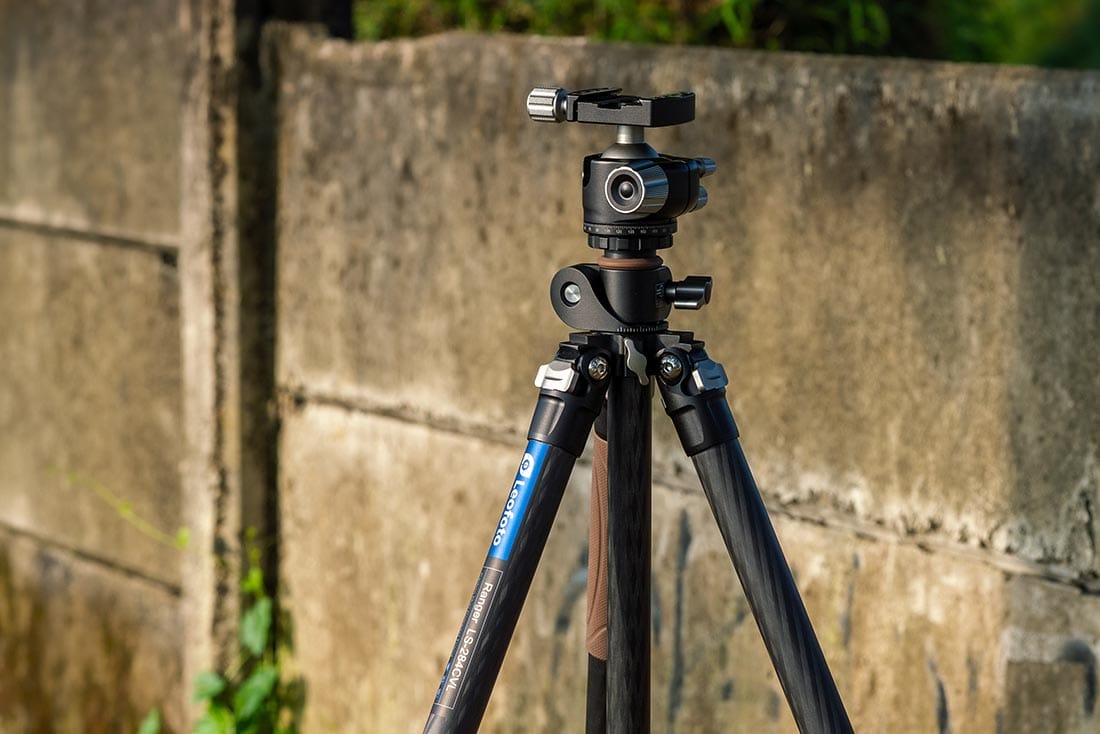
Camera tripods are made using different materials which inform the weight of the unit. We mentioned earlier the situations you may want to use lighter or heavier tripods.
Lightweight tripods tend to be made from aluminium or carbon fibre. Carbon fibre is probably the lightest material you can have a tripod made from, but if that tripod is tall and has extra features on the head then it can add to the overall weight. Carbon fibre tripods, while light, can be more expensive due to the manufacturing process.
Small lightweight tripods though tend to wobble around in the slightest breeze. There is a compromise to be made if you want to save weight but also have stability. Look for a lightweight tripod with a hook under the main pillar. You can use this to hang your camera bag and stabilise the tripod further.
Heavy tripods give you more stability, reliability and confidence that it won’t be affected as much by outdoor conditions – yet the weight must be taken into consideration. It’s impractical to carry 2-3kg of tripod across hills and mountains. But if the weather is very windy a heavier tripod is beneficial to keep the camera still.
Judge your destination and how close you can get to it without having to carry much weight. Otherwise, heavy tripods are better for indoor environments. Made of steel, heavy-duty tripods keep cameras stable when you are doing other things.
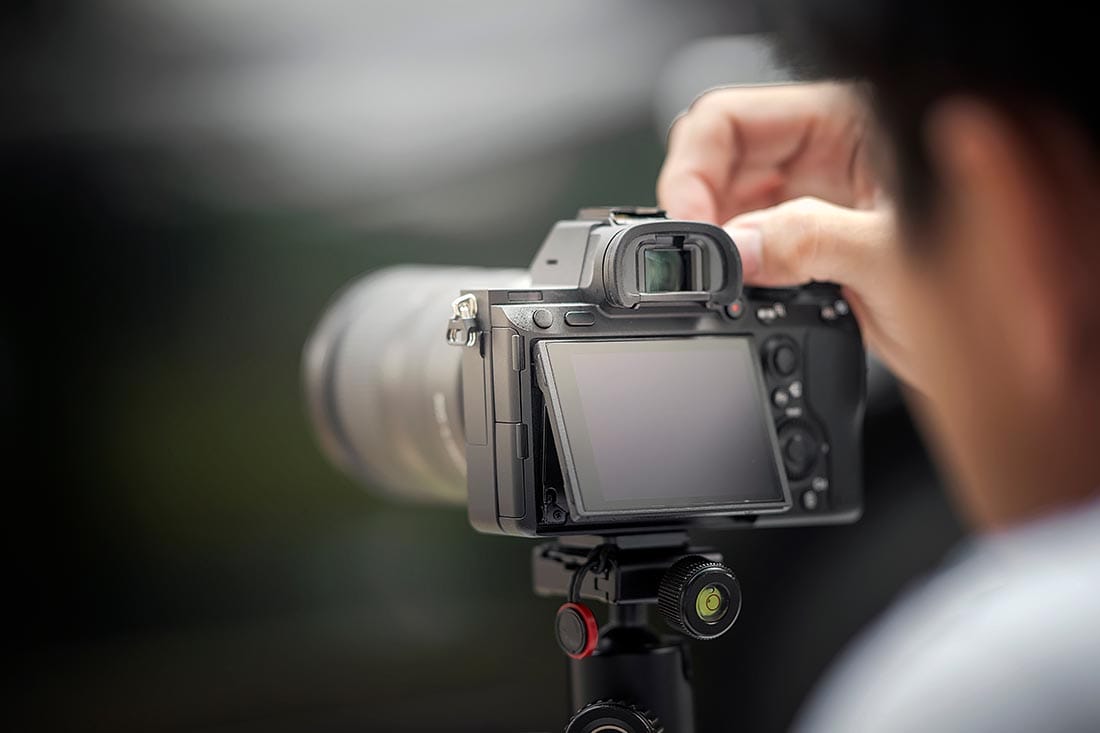
The best tripod for a new photographer will be informed by the general purpose and your budget.
Carbon fibre tripods tend to be a little more expensive than aluminium and steel ones, but they do have the added benefit of being lightweight, more durable, less susceptible to corrosion over time too – but they may be too light for strong weather.
The other thing that will dictate which tripod is best for a photographer is the brand of tripod. While all tripods have 3 legs and a head the manufacturer’s reputation will change that all important ticket price.
While you can get some great bargains with smaller brands such as K&F Concept, Zomei and Neewer the main manufacturers of tripods for photographers are;
● Manfrotto
● Peak Design
● Gitzo
● Really Right Stuff
● Feisol
● 3 Legged Thing
● Vanguard

I’ve picked out 3 of the best budget-friendly tripods for beginner photographers to take a look at.
Max load: 3kg;
Max height: 165cm
Closed height: 45cm
Weight: 1.4kg
Material: Aluminium
Action: Pan and tilt
Max Load: 6kg
Max height: 1.45m
Closed height: 0.40m
Weight: 1.2kg;
Material: Carbon fibre
Action: Ball head
Max load: 18kg
Max height: 167cm
Closed length: 45cm
Weight: 1.6kg
Material: Aluminium
Action: Ball head
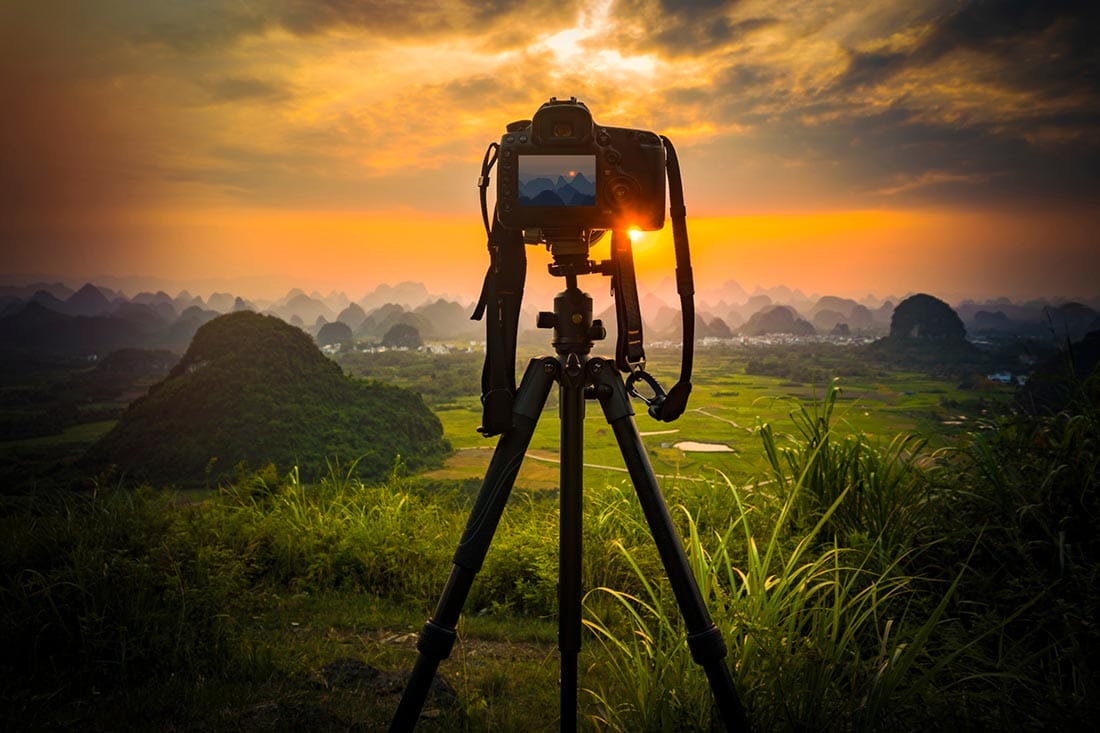
All photographers should ought to have a tripod on their camera bag, even if you don’t use it everyday you’ll eventually find a purpose for it as you grow and try new things.
It’s not just a tool for the professionals but a device that even beginners and amateurs can use to take shots that are just as good as a professional. Remember to consider the weight, height and type of head you think is best for your style of photography.
If you’ve enjoyed this guide, please check out other articles down below.
Discover TOP features in the Lightroom CC mobile app with this guide for enhancing your photo editing skills. For desktop and tablet too.
Shooting sunsets using amazing 5-in-1 magnetic lens filters from Kentfaith, the 1st choice for photo & video products.
Popular memory cards for photography – what’s the best SD card for your digital camera? Choose the right capacity and class speed in our guide
Learn the basics of photography – fast – with our FREE 60-Second Photographer online course. Each class is short and sharp with simple, actionable steps that give you immediate results.
x 30 lessons

© iPhotography™
Become a confident and competent photographer in less than 30 minutes!
Before you leave, make sure you’ve secured your FREE online photography course (worth £29.99)
Each class is just 60-seconds or less making it the fastest and easiest way to learn photography!